Topics:
HY-GUARD EXCLUSIONSubscribe now and get our latest blog and video content delivered straight to your inbox.
What Kind of Wildlife Does (and Doesn’t) HY-GUARD EXCLUSION Exclude?

Sep 29, 2023

When you’re a homeowner, there’s no shortage of problems and maintenance issues to keep up with. One week, your faucet starts leaking and you need to call a plumber. The next week, you discover mold in the basement carpet and have to call a cleaning service. The freedom of homeownership means your house is yours — but the downside is that the upkeep and repairs are yours, too.
One home ownership problem we’re acutely aware of at HY-C is that of invasive wildlife. Raccoons, squirrels, bugs, you name it — depending on where you live, the threats are varied and vast. Our line of HY-GUARD EXCLUSION screens, caps, and guards are designed to mitigate and even eliminate the threats of local wildlife getting into your home.
But what kinds of critters can these exclusion products keep out? And, more importantly, what kinds of critters can’t they keep out? In this guide, we’ll cover exactly that. By the time you’re done, you’ll know the vulnerable entry points where animals and insects can get into a home, which HY-GUARD products will keep them out, and the limitations of those products. You’ll be ready to utilize exclusion products to keep the common local wildlife out of your home.
What Kind of Wildlife Gets in Your Chimney?
Starting at the very top of the house, the most vulnerable entry point for wildlife is the chimney flue. By far, the most common chimney invaders are raccoons. Raccoons are great climbers; so great, in fact, that they’re one of the only animals that can climb up and down a chimney flue. It’s not uncommon for a female raccoon to set up shop on a chimney’s smoke shelf and create a nest for her young.
The other critter most likely to invade a chimney is a chimney swift. These birds are different from other birds in that they hardly need any horizontal momentum to start flying. They can essentially take off from a standing start and, as a result, they tend to use the limited confines of a chimney as a safe spot to build their nests (hence their name).
Less common candidates to get into a chimney include bats, mice, and squirrels. Contrary to popular belief, bats don’t tend to make homes in chimneys; unlike chimney swifts, they can’t fly straight up, so if they wind up in a chimney, they’ll likely become trapped there. Same goes for squirrels and mice — neither can climb back up the chimney flue, so unless the flue tile itself is cracked (providing a spot to come and go), mice and squirrels will get stuck in a chimney.
The Solution: A Chimney Cap
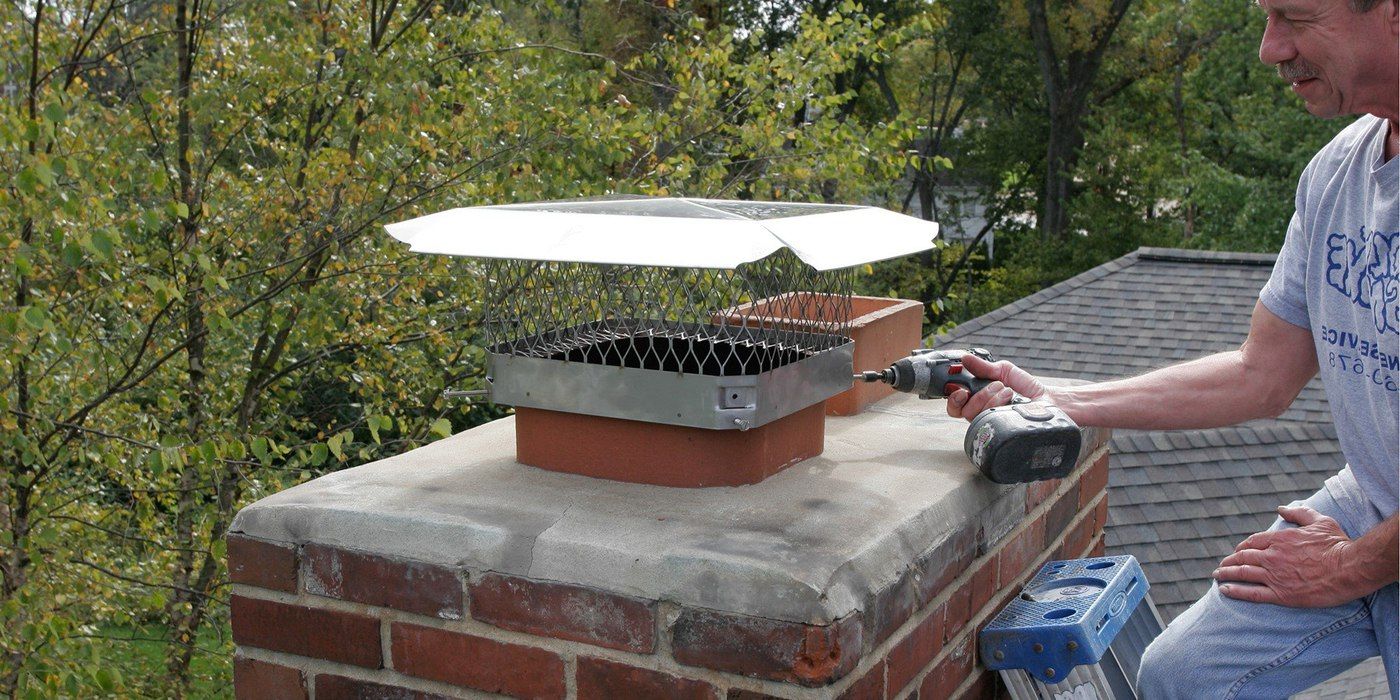
A chimney cap, with its solid top and diamond mesh sides, will keep raccoons, chimney swifts, and other birds from accessing your chimney flue while still providing enough ventilation for smoke from the fireplace to dissipate. Our Draft King and Shelter brand chimney caps are made from stainless steel and most of them are bolted onto the flue, meaning curious animals won’t be able to remove or damage them to gain access.
Critters That May Still Gain Access
Most chimney caps are made with a ¾” diamond mesh pattern that’s small enough to exclude most animals, especially bigger, roof-loving animals like squirrels and raccoons. This mesh is still wide enough (in theory) to let in a small bat or a baby mouse, though.
Despite the protection a chimney cap offers, the mesh openings are still vulnerable to insects, too, most commonly stink bugs, bees, and wasps.
What Kind of Wildlife Gets in Your Roof Vents?
Roof vents are vital for maintaining air circulation, which is pivotal for regulating temperature, preventing mold and particulate buildup, and promoting healthy breathing. These vents allow air in and out of your attic. They may also be connected to appliances in the home, like bathroom vent fans or stoves.
While the vents themselves are typically designed with animal exclusion in mind, that doesn’t stop certain critters from getting in — especially over time. Raccoons are strong and dextrous enough to peel vents open so they can slip through. Squirrels have strong enough teeth to chew through vents made of weaker metals (especially aluminum). Also, weather damage may create a hole or crease in a vent, providing just enough space for either animal to squeeze in.
The Solution: Roof Vent Guards
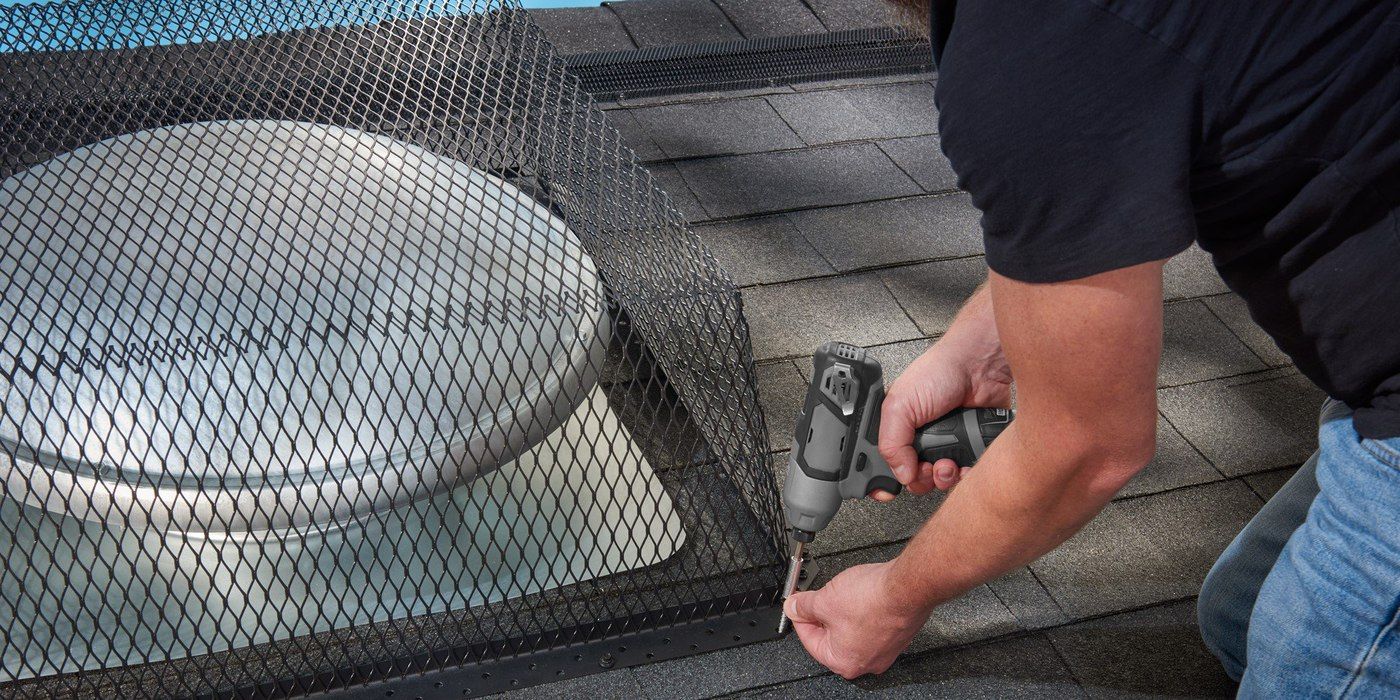
The vent itself is often not a good enough guard to keep animals out, so our HY-GUARD EXCLUSION line includes a variety of roof vent guards. These guards are made from stainless steel mesh and are installed over the vent as an added layer of protection. When installed and secured properly, they’ll keep out the raccoons and squirrels while still allowing your vents to function properly.
Critters That May Still Gain Access
Like chimney caps, HY-GUARD EXCLUSION roof vent guards are made with a few different mesh sizes: ⅝” at the largest and ¼” at the smallest. These sizes will keep out virtually any animal with four legs or wings, but you may still be vulnerable to wasps, bees, yellow jackets, stink bugs, or spiders (depending on which mesh size you choose).
There is a solution, though: simply add some bug screen mesh inside the vent itself before installing a roof vent guard. Many roof vents come with bug mesh pre-installed, but if yours doesn’t have it, adding it can go a long way towards keeping out insects.
What Kind of Wildlife Gets in Your Soffits?
Like roof vents, soffit vents exist to promote airflow (mostly to and from the home’s attic). While they’re usually made with small enough entry points to keep animals out, the problem with these vents lies with their materials. Many soffit vents are made from relatively weak materials like aluminum or plastic which tend to wear down or crack over time.
Raccoons love making homes inside of soffits. The area offers protection from the weather and predators, and it provides a great spot to raise offspring. Squirrels can get access to a damaged soffit vent too, usually by way of a nearby corner or windowsill. Even a mouse or a rat may find its way up into a soffit.
The Solution: Soffit Vent Screens
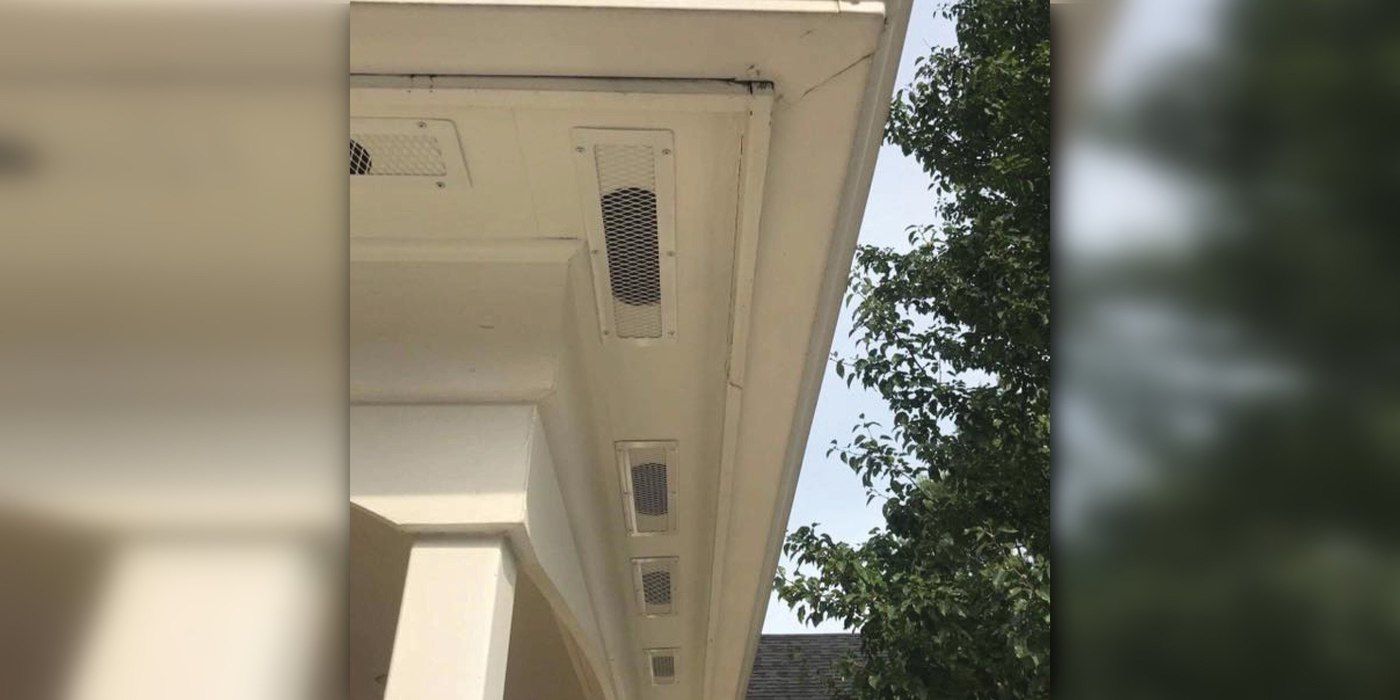
HY-GUARD EXCLUSION soffit vent screens are made from stainless steel (like most products we offer). They’re also drilled directly into the soffit through pre-cut holes. This combination means that curious critters can’t bite through them or rip them off of the house, ensuring your soffit and attic stay raccoon- and squirrel-free.
Critters That May Still Gain Access
Despite the sturdy materials and construction style, HY-GUARD EXCLUSION soffit vent screens are made exclusively with ¼” mesh. While this will keep out raccoons, mice, rats, squirrels, and birds, the soffit is still vulnerable to wasps, bees, yellow jackets, stink bugs, and spiders.
Even still, similarly to the roof vent guards, the threat from insects can be mitigated with a bit of bug screen. Luckily, bug screens are easy to cut through. Just cut out a few pieces that are the same size as the soffit vent cover and screw them both into the soffit.
What Kind of Wildlife Gets in Your Dryer Vents?
The most common type of wall vent on a home is a dryer vent. Dryers work by moving lots of hot air through the tumbler, and that air needs somewhere to go. A hose on the back of the dryer connects to a wall vent, allowing gasses to exit out of the side of the house.
A lot of dryer vents feature hanging louvers on them — a clever design that allows the vent to open up as air rushes out, but keeps it closed off to bugs and critters when the dryer isn’t running. Unfortunately, though, those louvers are made of plastic and can be easily broken by animals.
Birds are far and away the most likely critter to invade a dryer vent — specifically, European starlings. This invasive species of birds love to get into places where they don’t belong, and they often make nests in dryer vents. Even if they leave your vent alone after a while, it will still be damaged after their occupation, leaving it open to mice, squirrels, and other common animals.
The Solution: Dryer Vent Guards
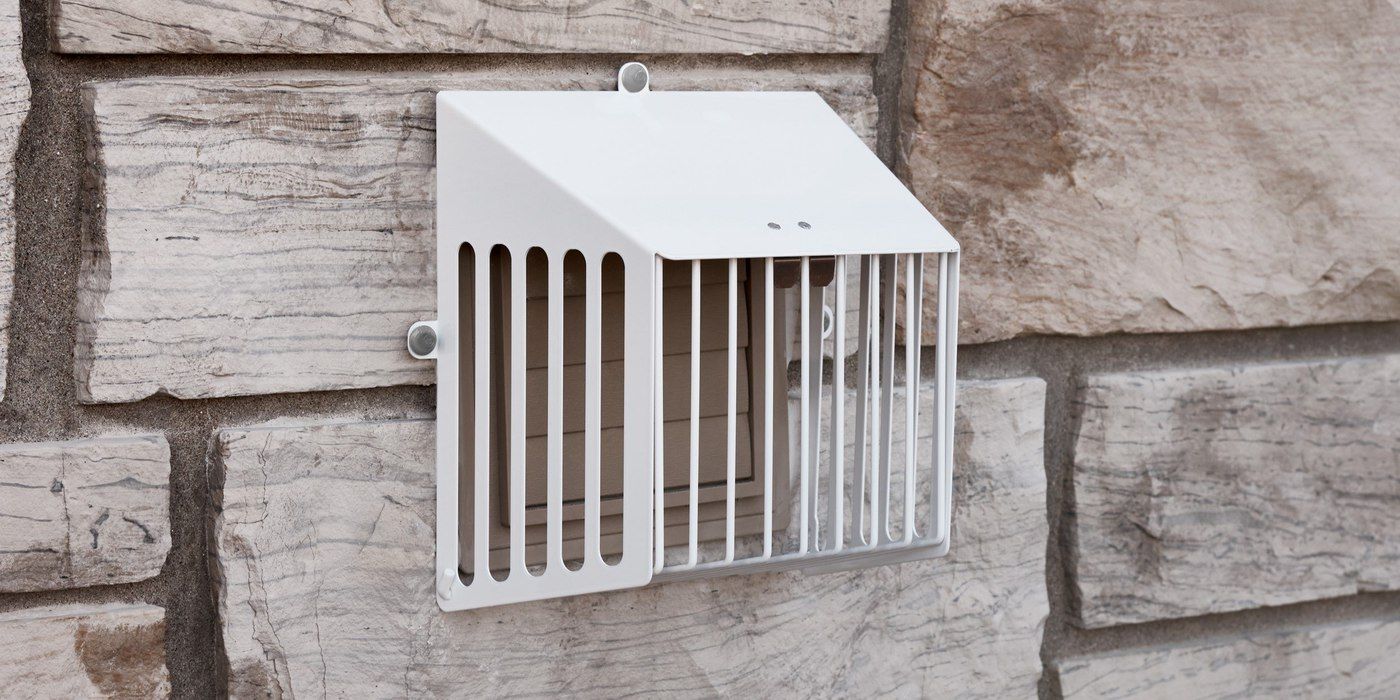
A European starling may be able to chip away at the plastic louvers of a dryer vent, but they won’t be able to get past a steel dryer vent guard. Bolted directly onto the side of the house, these guards will not just keep out birds, but also squirrels, mice, rats, or other small animals common in your area.
Critters That May Still Gain Access
HY-GUARD EXCLUSION’s dryer vent guards come in two styles: one with ¼” mesh, and another with vertical bars. The diamond mesh style will essentially exclude everything except for bees, wasps, stink bugs, and yellow jackets, but the louvers on the vent itself (provided they’re not damaged) should keep those out just fine.
The style with the vertical bars excludes birds, but it only acts as a deterrent to everything else, meaning bats, squirrels, mice, and rats can still break through its defenses if they’re determined enough. It’s also important to note that some of these vertical bar-style vents are made from plastic, a relatively vulnerable material that some pests might be able to break through.
What Kind of Wildlife Gets in Your Foundation Vents?
Roof vents provide ventilation to a home’s attic. Foundation vents provide ventilation to a basement or crawl space, and ventilation in these spaces is equally important. Due to their low location, though, foundation vents are perhaps some of the most vulnerable points of entry on a house. Any ground animal that gets curious enough can find its way in.
Foundation vents typically make homes for the usual suspects (i.e., squirrels, skunks, raccoons, opossums, etc.). Depending on the size of the vent and the strength of its material, though, animals of all sizes may get in. It’s rare, but there are documented incidents of full-sized bears invading crawl spaces and hibernating there during the winter.
The Solution: Foundation Vent Screens
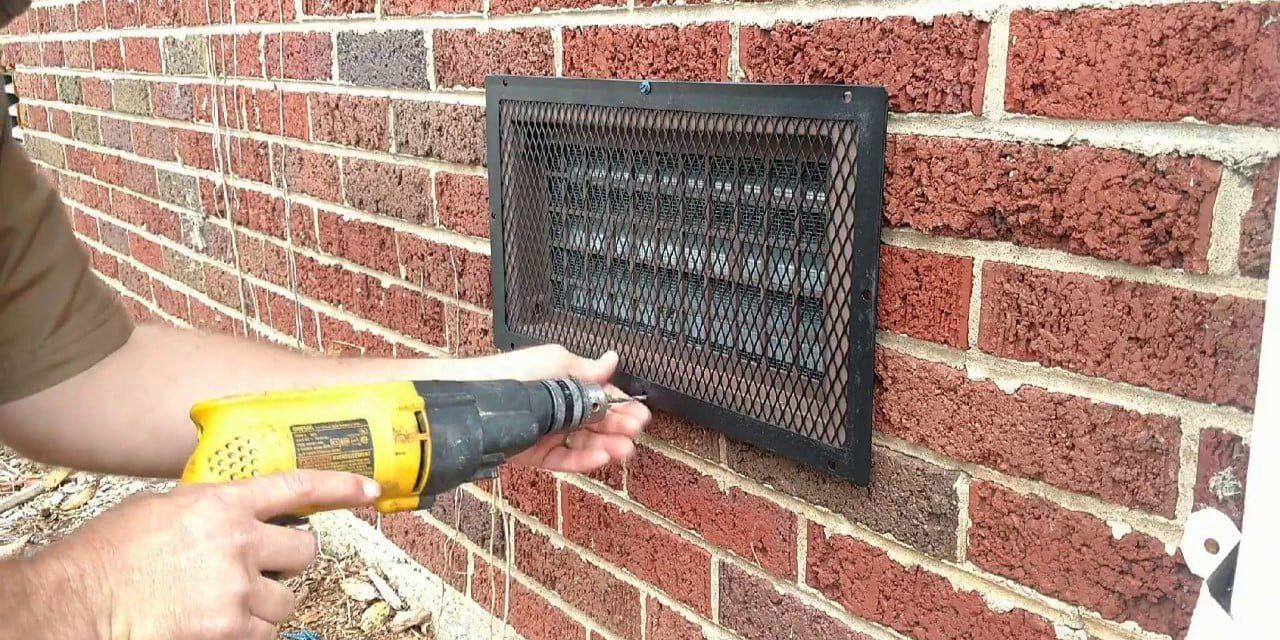
Like the soffit screens mentioned earlier, foundation screens are bolted on over foundation vents. They allow air to continue to circulate in the basement or crawl space while preventing small and large animals alike from getting in.
HY-GUARD EXCLUSION’s selection of foundation vent screens come standard with ⅜” diamond mesh and a stainless steel construction. They’ll keep out anything from squirrels to skunks and opossums to raccoons — even bears.
Critters That May Still Gain Access
It should be clear by now that diamond mesh is great at keeping animals out, but it has a bit more trouble keeping insects out. Bees, wasps, yellow jackets, and stink bugs can still get through our foundation screens and into a basement or crawl space. Since foundation vents are near to the ground, you should also be mindful of smaller insects like ants and spiders.
However, similarly to the soffit vents and roof vents, all you need is a little bug screen. Just cut it to fit and attach it along with the foundation vent guard during installation.
Is HY-GUARD EXCLUSION the Right Fit for Your Home?
Keeping your home under control is a war with a lot of battles, and keeping critters out is one of the toughest battles of all. There are so many points of entry for a diverse list of wildlife to make their way through, and accounting for all of them can be overwhelming.
Thankfully, at this point, you should have a good understanding of those entry points and how to barricade them. From here, the best thing for you to do is determine what your house has:
- A chimney
- Roof vents
- Soffit vents
- Wall (dryer) vents
- Foundation vents
It’s also a good idea to take an inventory of the local wildlife. Do you have squirrels in your area? Lots of raccoons? Stink bugs? Or different animals and insects altogether?
Once you know your home’s vulnerable spots and are aware of the common types of invasive species in your area, it’s up to you to decide which points of entry you’d like to guard against which species. Finally, take that information to a wildlife control professional in your area. They’re trained in exclusion products, and they’ll be able to install all the screens and guards you need to keep your home pest-free.




